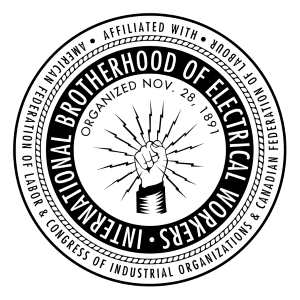The NEBF is in danger
Multiemployer Pension The Multiemployer Pension Recapitalization and Reform Plan is proposed by Senators Charles Grassley of Iowa (chairman of the Senate Finance Committee) and Tennessee’s Lamar Alexander (Health, Education, Labor and Pensions Committee chairman). It was released on November 20, 2019. The introduction says: “The scale and scope of the underfunding in a large number of multiemployer plans is high. The costs of … reforms should be borne principally by the stakeholders within the multiemployer system.”[1] WHAT IS IT? This white paper seeks to reform the multiemployer pension system, which is in crisis due to several large failing plans. The failure of these plans, including Teamsters’ Central States, could threaten the security of the government program created to shore up the pension system, the Pension Benefit Guaranty Corporation (PBGC). The Grassley-Alexander plan would be devastating to the IBEW’s 155 local multiemployer pension plans as well as to the National Electrical Benefit Fund (NEBF). The details of this plan that have been released indicate that it is at least twice as bad as the Joint Select Committee proposal of November 2018. Like that plan, the Grassley-Alexander white paper would render the current multiemployer pension system unsustainable and rapidly result in government-induced market failure. It would increase risks to multiemployer pension plans by:
It is an existential threat to the multiemployer pension system. IS THIS THE ONLY WAY TO ADDRESS THE MULTIEMPLOYER PENSION CRISIS? No. The multiemployer pension system, including the failing plans and the Pension Benefit Guaranty Corporation, could be made whole by taking back 0.005% (one half of one percent) of the 14% corporate tax break passed by Congress in 2017. This would fix entire pension crisis and shore up the PBGC. The PBGC estimated in its latest report that the multiemployer pension problem will cost $65 billion. Increasing corporate taxes from 21 to 21.5 percent would raise $50 billion in 10 years. For context, remember Congress authorized a $700 billion bailout to prop up banks and other financial institution in 2008 – with no penalty or payments from those banks – and has provided other corporate tax giveaways in recent years. HOW WOULD IT AFFECT THE NEBF? Today, the NEBF pays the PBGC approximately $16 million in annual premiums. Under the Grassley-Alexander plan, that could go up to $46 million annually, an increase of 188% in the first year. This plan would also:
Overly burdensome premiums and additional taxes would produce a financial liability that would increase the number of declining plans, moving Green Zone (neither critical nor endangered status as defined by the Pension Protection Act) plans and turning them into Yellow or Red Zone (endangered or critical). This proposal would decimate every multiemployer plan, including all of the IBEW’s. WHY IS THIS URGENT? Senate Republicans reportedly plan to fold this into the end-of-the-year spending bill, the “omnibus,” which funds the federal government. Congress needs to pass a spending bill by December 20, 2019 to keep the federal government open. HOW WOULD IT AFFECT RETIREES? The Grassley-Alexander plan creates a new tax on current and future retiree pensions, as high as 10%. The tax ranges from 3-10%, based on a plan’s zone status. Given the other proposed changes to multiemployer plans, all non-exempt retirees should expect to pay an additional 5-7% of their pensions to the federal government under this plan. Retirees may be fully or partially exempt from the retiree tax depending on their age and whether they are disabled. IBEW actuaries conclude that approximately 60% of the NEBF’s payments to retirees would be subject to this tax. WHAT ABOUT THE BUTCH LEWIS ACT? The Butch Lewis Act, titled “The Rehabilitation for Multiemployer Pensions Act,” (H.R. 397) passed the House of Representatives on July 25, 2019, with IBEW support. This legislation would create a low-interest federal loan program for troubled multiemployer pension plans. It’s a bipartisan compromise bill and nearly 30 Republicans voted for it in the House of Representatives. It is the best current proposal: it does not increase premiums and fees on healthy pension plans to support failing plans. Butch Lewis is a loan program, not a bailout. HOW WOULD THE NEBF BE AFFECTED? All construction sector members of the IBEW participate in the NEBF, as well as retirees and their beneficiaries. As of January 2019, there were 582,000 active members, retirees and survivors in the NEBF. The NEBF is the second largest multiemployer pension fund in the country. Most of the IBEW’s multiemployer pension participants are in plans that are financially sound, including the NEBF. HOW MANY IBEW PLANS WOULD THIS PLAN AFFECT? In addition to the NEBF, IBEW local unions participate in 155 separate multiemployer plans. HOW DO MULTIEMPLOYER PENSION PLANS WORK? Defined benefit multiemployer pension plans are administered by a joint labor-management committee and funded in part by negotiated employer contributions. They form the backbone of the retirement safety net for over 10 million Americans[2]. WHAT ABOUT THE MINE WORKERS (UMWA) PENSION PROBLEMS? The UMWA is opposed to the Grassley-Alexander plan. The Mine Workers’ plan has no major participating employers left and their pension plan is expected to go insolvent in the next six months. They have been lobbying for a separate legislative fix that would provide immediate relief. The IBEW supports the Mine Workers’ efforts and urges Congress to pass the bipartisan American Miners Act (S. 2788). Opposition to the Grassley-Alexander plan would not affect the Mine Workers. WHAT CAN I DO? Active members and retirees should immediately organize to make the IBEW’s strong opposition known to lawmakers. Here’s how:
[1] Multiemployer Pension Recapitalization and Reform Plan White Paper, page 4 [2] IBEW Policy Brief, November 2019
Page Last Updated: ()
|





